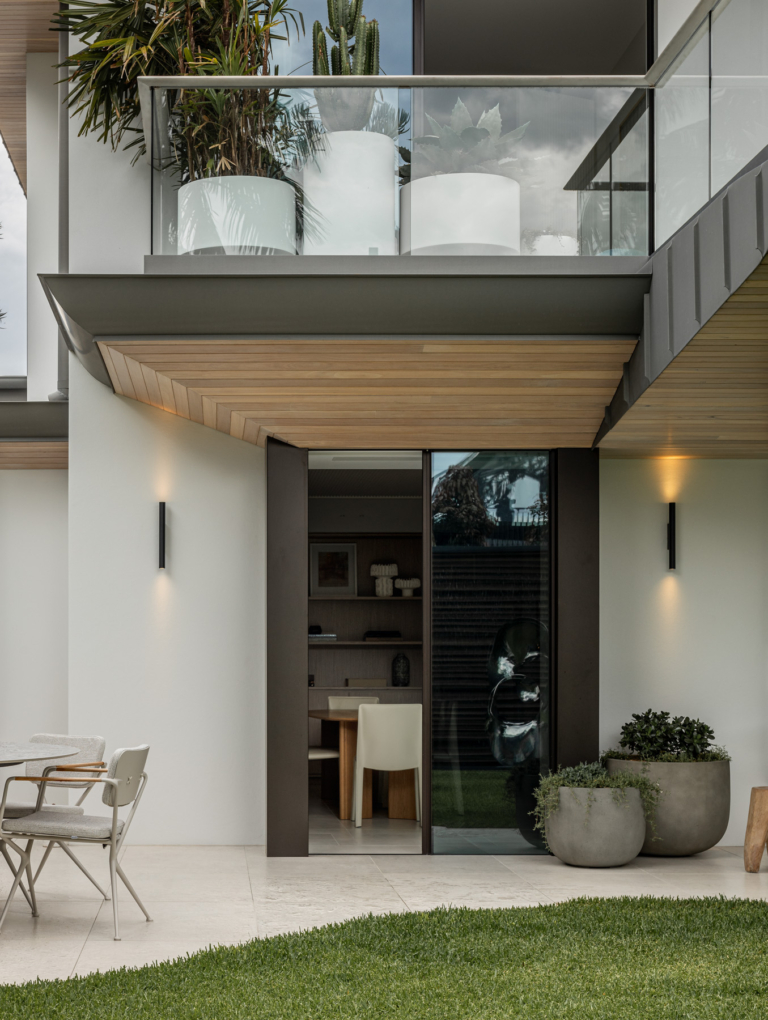
Robin Boyd
‘Most Australian children grow up on lots of steak, sugar, and depressing deformities of nature and architecture’. Robin Boyd wrote these words in 1960 in his ground-breaking book The Australian Ugliness, yet this biting summary of Australian design culture rings unnervingly true nearly 60 years later.
It is this uncanny contemporary quality of Boyd’s work, both architectural and written, that establishes him as a design and social visionary whose legacy inspires to this day. Boyd was active from the late 1940s to his death in 1971, during which time he designed 200 completed homes, published nine books and founded the Small Homes Service, providing affordable architectural plans for small family homes.
Boyd’s approach to architecture can be distilled from his passionate denouncement of what he termed ‘Featurism’ in design. Boyd described Featurism as the undiscriminating commitment to gratuitous adornment and features for the sake of features. He argues in The Australian Ugliness that ‘The tragic irony of Featurism is that it is practised in the name of beauty, on the assumption that all things made by man for use in the workaday world are necessarily ugly when naked, until they are given the extra enlivening life of a few extrinsic eye-catchers. The Featurist is not prepared to consider the simple proposition that no object which is true to its own nature needs cosmetics.’
In contrast the malaise of Featurism, Boyd advocated for strong modernist design principles; practising truth to materials, form following from function and sensitivity to environment and lifestyle. His homes are striking in their use of honestly raw materials such as stone (often, as in the case of the Boyd Baker House, quarried from the local area), natural unpainted timber, large amounts of glass bringing the outside in, clean lines and open space.
Boyd’s iconic Walsh Street House, designed for his family, demonstrates the unwavering commitment to the lifestyle of its inhabitants. In a departure from traditional ‘closed-plan’ housing of the 1950s, the Walsh Street House is profoundly open, with two separate pavilions built around a central courtyard. The main pavilion includes the formal entertaining areas, kitchen, master bedroom and family living spaces, while the smaller second pavilion was designed for the couple’s young children to ensure privacy and peace for Boyd and his wife Patricia when working from home or entertaining guests.
Boyd’s work is remarkable for his commitment to architecture and good design as an egalitarian practise. His distaste for Featurism and the design-illiteracy of Australian society is not an elitist criticism. For Boyd, Featurism is not a class-based phenomenon but one that applies equally to a palace as to a modest family dwelling. Indeed, in The Australian Ugliness he applies it to one of the most recognisable works of Australian public architecture: ‘The Sydney Harbour Bridge, with its entirely redundant pylons built as features to camouflage the honest steel, may be the crowning achievement of Australian Featurism, but the pylons differ only in scale, not in principle, from most things on three million Australian mantelpieces.’
The Small Homes Service recognised that architectural design was not achievable for everyone, (nor indeed practically possible, as Boyd noted ‘There are not enough artists to cover the world’s architecture, but if there were it might be too many’) and set out to bring the benefits of good design principles to as many people as possible. Good design, in Boyd’s terms, is not associated with expensive features or enormous size, but rather with a ‘less frivolous approach’ that ‘demands that any architectural sensations should stem from the use of the building, that the occupiers should be presented with a sense of space which is attuned and sympathetic to the activity of the building and its environment and, as an artistic ideal, that the architectural character should heighten the experience of the phase of life being sheltered’.
Boyd’s work demonstrates the timeless understanding that the value of architecture lies in its ability to support the life of the inhabitants and sympathise with the surrounding environment. A modest belief at heart, and one that remains aspirational today.

![Book Flatlay Cover Front Transparent Trio[1]](https://d31dpzy4bseog7.cloudfront.net/media/2024/06/07080212/Book_Flatlay_Cover_Front_Transparent_Trio1.png)























